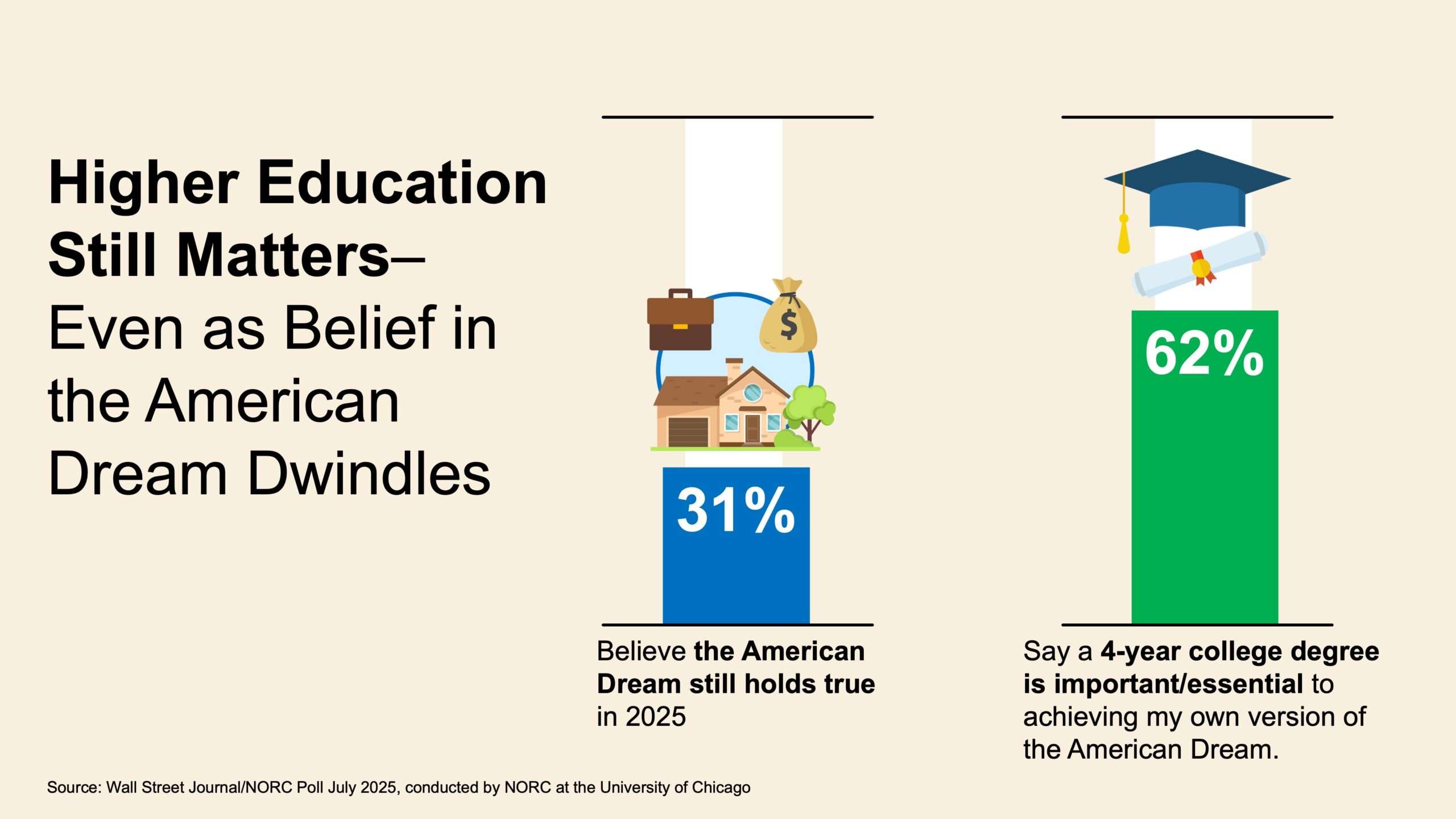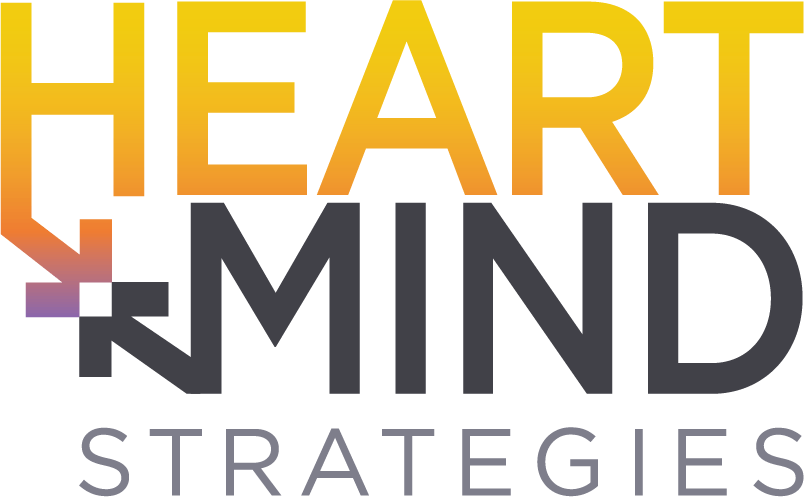By Jennifer Airey, Founding Partner
KEY TAKEAWAYS:
- Despite declining belief in the American Dream, 62% of Americans say a 4-year degree is essential or important to achieving personal success.
- A significant enrollment gap persists—88% of high school graduates are considering post-secondary education, but barriers like cost and unclear career pathways hinder action.
- Only 24% believe 4-year colleges effectively prepare students for the workforce, compared to 46% who favor apprenticeships and trade training.
- 57% of Americans are concerned about the education system’s ability to prepare the next generation for work.
- There’s a renewed opportunity for higher ed to lead by aligning education with workforce demands and lifelong purpose.
A Surprising Bright Spot in a Dim Economic Outlook
As Americans grow increasingly skeptical about the promise of upward mobility and despite a sobering economic outlook, many still view a 4-year college degree as essential to achieving personal goals and long-term success.
As I was looking for hints of optimism in last month’s sobering Wall Street Journal article and supporting data “Americans Lose Faith That Hard Work Leads to Economic Gains, WSJ-NORC Poll”, where the authors showed the “disconnect between the nation’s sour outlook and traditional measures showing a robust economy,” I found a glimmer of hope for the oft-brow-beat higher education.
The Wall Street Journal/NORC poll revealed a notable shift. While belief in the American Dream continues to decline (only 31% believe it still holds true in 2025, down from 36% in 2023), 62% of respondents now say a 4-year degree is essential or important to achieving their own version of that dream—a figure that has grown in intensity from a year ago (from 57% overall in 2024, where 16% said essential in 2024 versus 22% who say so in 2025). This growing sentiment underscores the critical role of education in preparing individuals not just for jobs, but for meaningful careers and lives.

Intent vs. Inaction: The Enrollment Gap Challenge for Education and Workforce Readiness
The above findings align with findings from a Heart+Mind Strategies study, which shows belief in higher education remains strong, even as enrollment lags (for example, 88% of U.S. adults with a high school diploma are still considering or pursuing post-secondary education).
This disconnect highlights a critical challenge for education and workforce readiness: people want the benefits of a degree and the college experience, but they face persistent barriers. These include unclear pathways to career outcomes, financial concerns, and a lack of understanding about how education fits into their lives and long-term goals. To close the gap, institutions must not only promote access and personal relevancy but also clearly communicate how their programs prepare students for real-world success.
Workforce Readiness: Where Colleges Fall Short
But of course, the story is not all sunshine and roses. Despite growing belief in the value of a college degree, many Americans remain unconvinced that higher education is effectively preparing students for the workforce. According to the WSJ/NORC data, only 24% believe 4-year colleges are meeting the needs of today’s job market, with similar skepticism toward 2-year colleges (27%) and high schools (26%). In contrast, 46% of respondents see apprenticeships and trade training as more aligned with workforce demands.
This signals a critical gap in education and workforce readiness—one that colleges must urgently address. The concern is widespread: 57% of Americans are extremely or very concerned about the education system’s ability to prepare the next generation for the workforce. To rebuild trust, institutions need to evolve beyond traditional academic models and demonstrate how their programs equip students with the skills, adaptability, and real-world experience needed in today’s economy.
Still, there’s hope. 41% of respondents believe the cost of a 4-year degree is worth it, a 7-point rebound from 2024 and a return to 2023 levels.
What This Means for Higher Ed
The data paints a clear picture: belief in the value of higher education is resilient, but institutions must evolve to meet the moment. To close the gap between aspiration and enrollment, colleges and universities need to reframe how they communicate the full value of the college experience—not just the first job, but the lifelong benefits of learning, earning, and purpose.
As Mark Perna noted in Forbes earlier this year (“New Data Reveals Just How Deep The College Crisis Goes”) HR managers and recent grads alike are calling for more relevant, experience-based learning, including soft skills, AI fluency and collaborative problem solving that mimic work life in the real world.
This means making education and workforce readiness a central part of the conversation, yet not the only point. They must also clarify the cost-benefit equation, helping students and families understand how degrees connect to long-term outcomes.
Higher ed has the opportunity to respond—not just with curriculum changes, but with clearer messaging, stronger partnerships, and a renewed commitment to preparing students for life beyond the classroom.
Higher Education’s Moment: Investing in Workforce Readiness for Tomorrow
This is higher education’s moment to lead. To not only tap into relevancy, but to reimagine how learning connects to life, career, and purpose.
If you’re a higher ed leader looking to better understand these shifting perceptions and how to respond, connect with Jennifer Airey to learn how Heart+Mind Strategies can help your institution or organization evolve. From research-backed insights to strategic guidance, Heart+Mind is ready to help you meet today’s needs and shape the future of education and workforce readiness.
